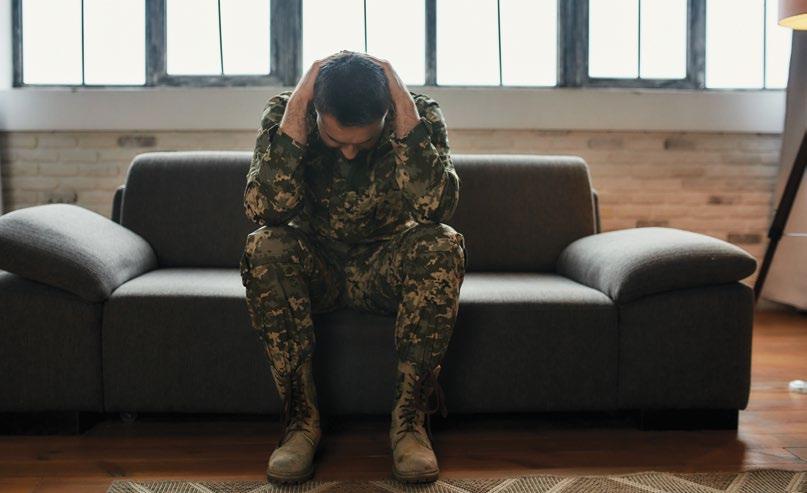
2 minute read
Treating PTSD
Dealing with PTSD
Story by Phoenix Content Services
Advertisement
Post-traumatic stress disorder is a real illness faced by millions of Americans. You can get PTSD after living through or seeing a traumatic event, such as war, a
major storm, sexual assault, physical abuse or a terrible accident.
PTSD makes you feel stressed and afraid after the event, and it can impact your daily life, relationships and future.
PTSD by the Numbers
Here are some sobering statistics on PTSD from






© adobe stock

the National Center for PTSD. • About 7% to 8% of the population will have PTSD at some point in their lives. • About 8 million adults have PTSD during a given year. This is only a small portion of those who have gone through a trauma. • About 10 of every 100 women develop PTSD sometime in their lives compared with about four of every 100 men.
What are the effects of ptSD?
PTSD can cause many serious issues, including: • Flashbacks, or feeling like the event is happening again. • Trouble sleeping or nightmares. • Feeling alone. • Angry outbursts. • Feeling worried, guilty or sad.
PTSD can happen to people of all ages. Signs of PTSD may start soon after a frightening event and then continue. They can also start months or even years after a traumatic event, so it’s important to be honest with your physician or mental health provider
if you start feeling signs of PTSD.
Effective treatments to discuss with your physician
According to the National Center for PTSD, there are some therapies that have been proven most effective by medical and mental health professionals, including: • Prolonged exposure. Teaches you how to gain control by facing your negative feelings. It involves talking about your trauma with a provider and doing some of the things you have avoided since the trauma. • Cognitive processing therapy. Teaches you to reframe negative thoughts about the trauma. It involves talking with your provider about your negative thoughts and doing short writing assignments. • Eye movement desensitization and reprocessing. Helps you process and make sense of your trauma. It involves calling the trauma to mind while paying attention to a back-and-forth movement or sound (like a finger waving side to side, a light, or a tone).








